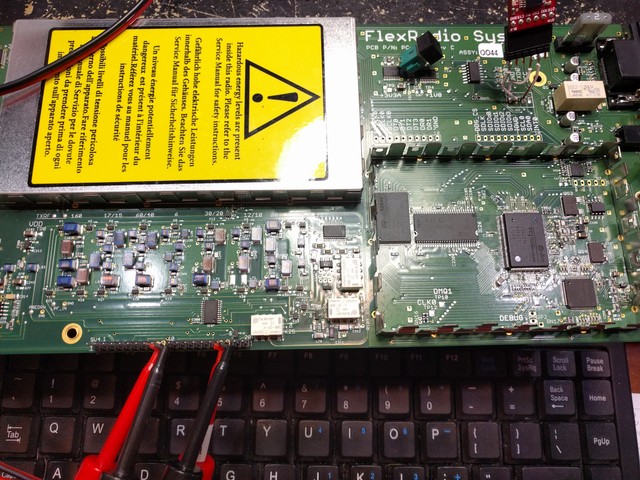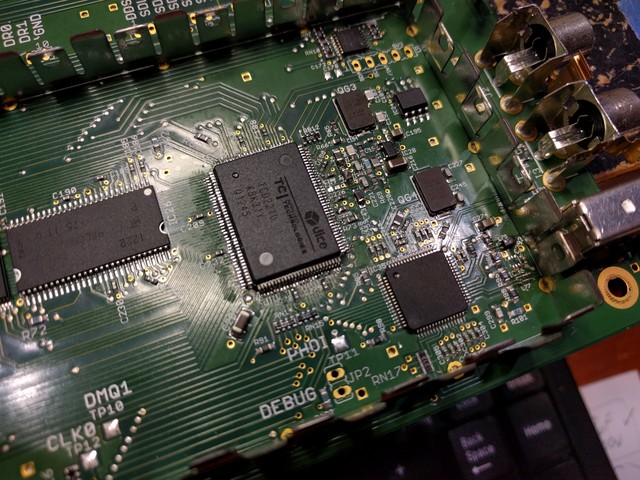Nothing ventured, nothing gained. It seems good finds come along infrequently on ebay, but every so often I find something. In addition to a non-working SDR-1000 (fixed, but that's a different story) I found a non-working Flex-3000 NTRX board for around $30. Well, I got it working. Here's the story.

7 July 2017. First power-up. Pulls about 2A when supplied with 5VDC on SV4. No activity to speak of. This seems high. I used my Seek IR camera to determine that IC28 is getting super-hot. IC28 is a TPS79318, a 1.8v regulator for the TCD2210 firewire controller. The regulator is about 1mm square and there's no way I can tell that it's getting that hot without the IR camera. I've had some good success using my IR camera as one of the first diagnostic tools on a non-working board. Upon removing the regulator, power consumption goes down to about 500mA. This seems reasonable.
13 July 2017. IC28 feeds three points on the TCD2210; that's it. Those points have series inductors which seem convenient to remove for testing individual current sinks on the TCD2210. In the previous week a new regulator arrived from DigiKey, so I removed the three inductors and replaced the regulator. Testing current consumption, TCD2210 pin 87 has 2 ohms to ground, this is the thing that's sucking down all the power. Suspect the TCD2210 is bad.
7 Sep 2017. Two TCD2210s received from Hong Kong via some unknown vendor off AliExpress. This is far from a preferred parts source, but it's either that or give up. They weren't expensive, so whatever. I removed the existing TCD2210 by taking multiple passes with an x-acto knife across the pins until the chip body is free. Luckily the package does not get soldered down on the back of the body. Several quick swipes with the Metcal cleans the old pins off the pads. New part is soldered down under 30x magnification. The TCD2210 is a QFP-128 package, definitely one of the more challenging things I've soldered on so far.
My board still doesn't show on the firewire bus, but on power-up, the board relays now click. This is different; I suspect it's no longer brain-dead. Hmmm. With a new TCD2210, do I need to flash new firmware on this thing? Maybe? I can't find good docs on the chip, so ... maybe but probably not? Most of my work is done late at night. As the night progresses my ability to think clearly declines so I find it best to leave questions like this for later.
27 September 2017 -- Find F3K firmware in a PowerSDR version. The old support.flexradio.com site is kinda broken when it comes to some downloads but I make do. FW update should be automatic on starting, but I don't get any firewire connection. Huh. X2 sure looks like a serial port. A scope shows output on power-up. I attach a 3.3v RS232 level converter -- it speaks 115200 baud!
